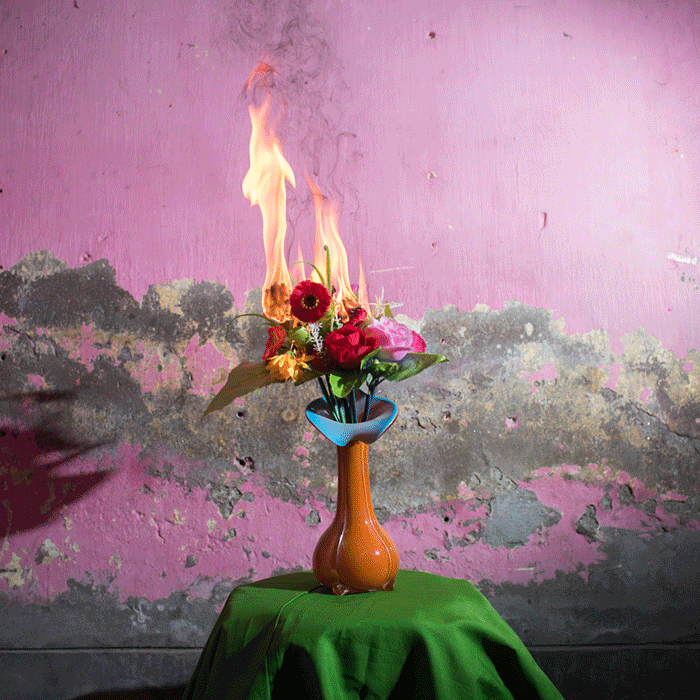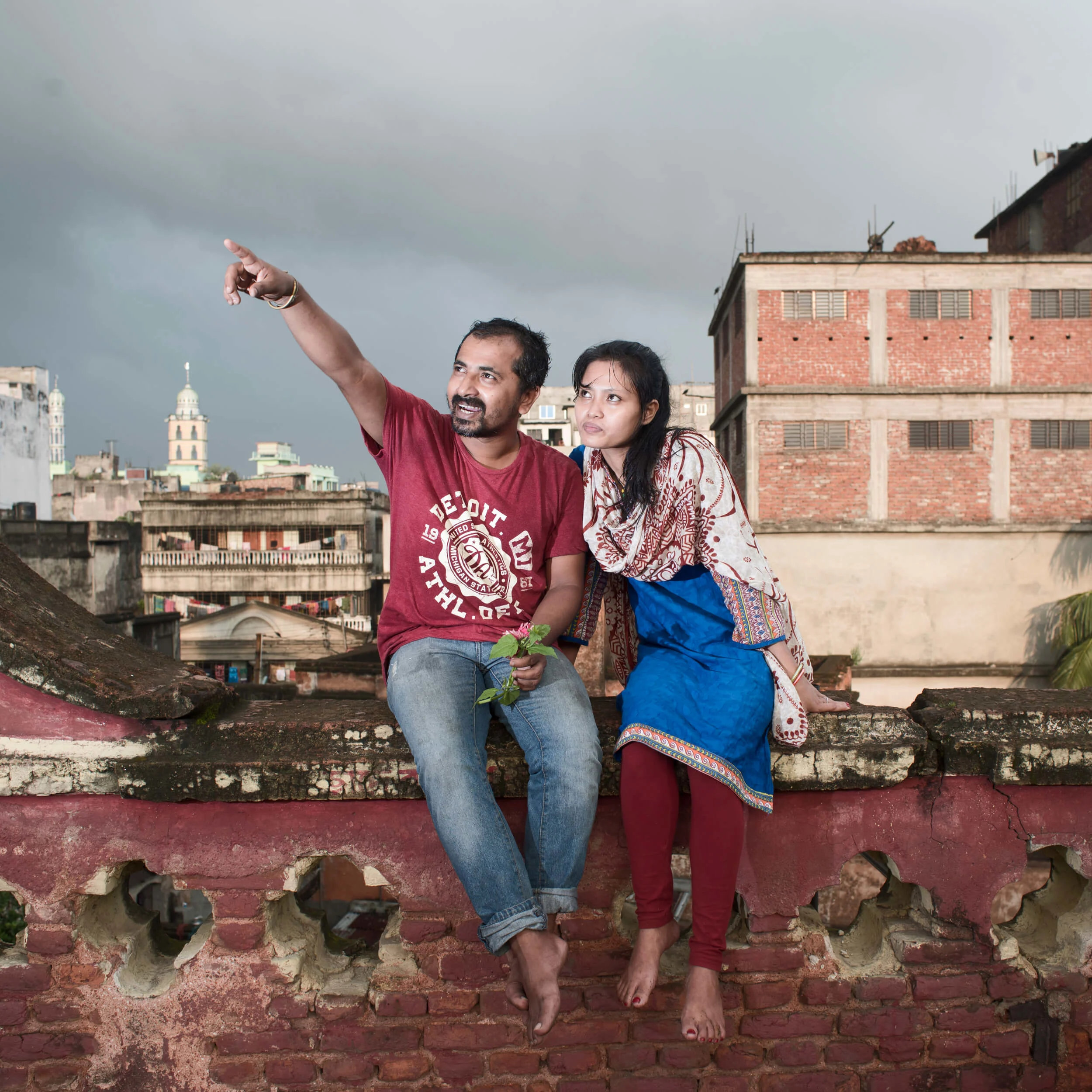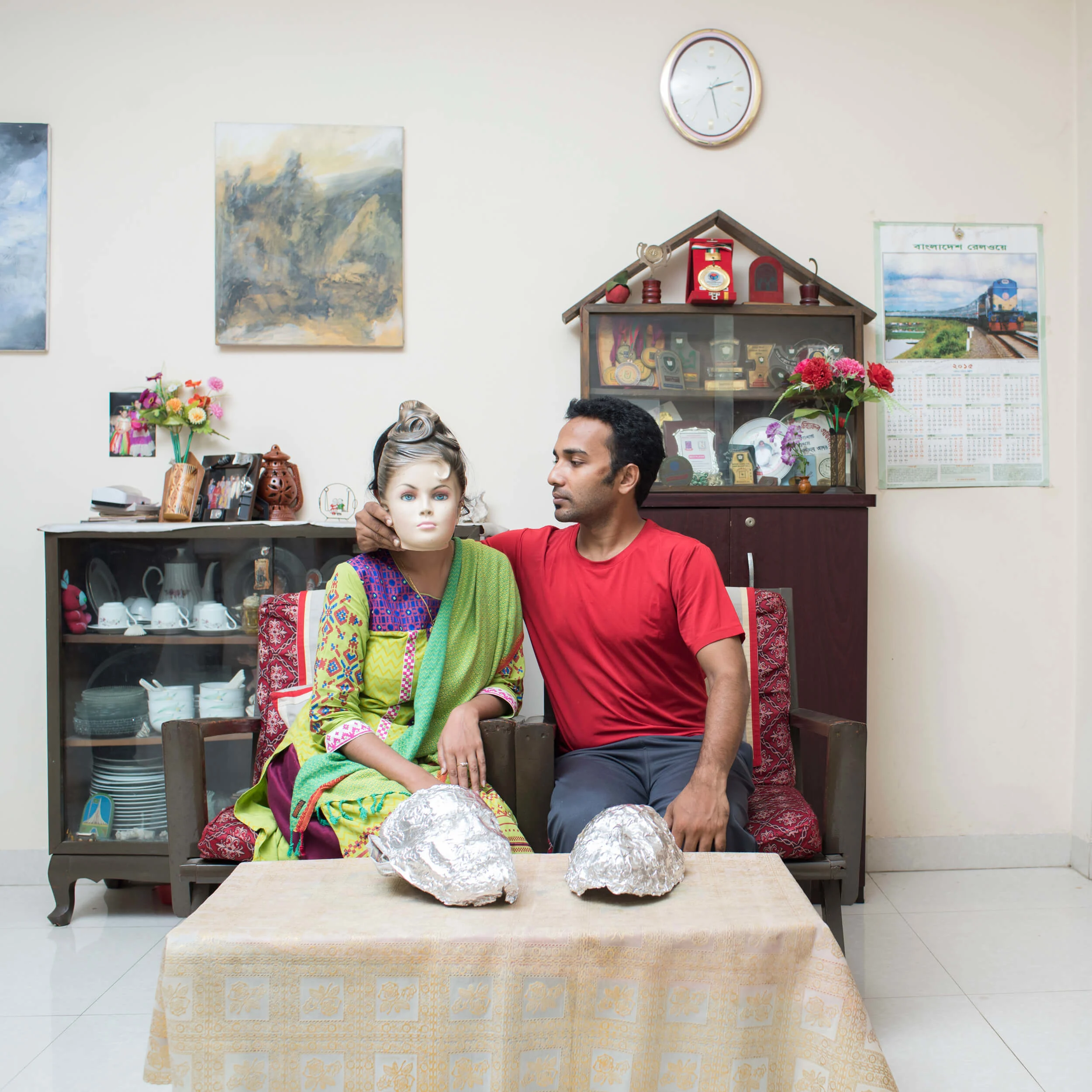
Throughout much of South Asia, marriages between two people of different faiths are forbidden. Photographer Samsul Alam Helal speaks to Alex Kahl about his series Runaway Lovers, which focuses on the brave lovers who fled their home and family in order to start a new life together.
In 2015, one of Samsul Helal’s close friends were forced to abandon their home and family to be with their partner, who was of a different religion. Samsul observed as the whole episode unfolded. Across much of South Asia, inter-religious marriages are deemed unacceptable, and are sometimes punishable by torture and even death. In Samsul’s home country of Bangladesh, alienation and suicide are more likely outcomes. “They brave it all out to be together,” says Samsul. “These people are fighting just to coexist. They’re fighting to love.”
The year after his friend fled, Samsul witnessed increased religious tension in his home nation. It was then that he started work on his project Runaway Lovers.

Some of the subjects are Samsul’s friends, people he knows (or knew) from his time living in Dhaka. One of the couples said that they first met at a neighbour’s wedding and fell in love,” he explains. “They wanted to live together, but they knew their different religions would get in the way. They broke their family relationships and ran away to get married and start afresh in a different city where people didn’t know about their religion.”
It’s not all plain sailing once they’ve fled their home surroundings, though. When we think of fictional characters running from their homes, they’re often running from evil families, from people who don’t love them. These instances aren’t quite the same. Their families simply follow certain religious customs and wouldn’t accept their love for one another, and for that reason they have to leave them behind. Leaving the people who have been there for them throughout their lives.
One photo, showing a couple sitting in an unused cinema, surrounded by empty seats, paints a picture of the loneliness and isolation a decision such as this could lead to. These people are sacrificing everything for each other, and this only emphasises the magnitude of their love. Samsul understands it’s often worth it. “It’s hard to get through the whole of life without love,” he says.



Many of the photos in the series involve scenery or inanimate objects; metaphorical symbols signifying making sacrifices for love. A bouquet of flowers falls apart and wilts as it’s engulfed in flames; a pile of shattered glass piles on the floor; Exotic birds sit trapped in rusty cages; a bike carriage covered with lights and decorations, seemingly set up for a couple in love, stands empty before a romantic backdrop. In other shots, the runaway couples sit together, often protecting their anonymity behind masks, plants and, in one particularly curious composition, each other’s hair.
Samsul talks about how, in the time between falling for one another and eloping, the couples are visibly unhappy. “They cannot be their authentic selves. They can’t communicate truthfully with their families or society,” he says. “I feel some of the couples are more broken than others. When I ask them how they’re doing, they say, ‘Oh, I’m fine.’ But I can tell they’re not.”


The couples are desperate to escape the stressful life of secrecy they have to live when around their families, but Samsul’s photos bring hope to a situation which could at times appear hopeless. One photo in the series shows a couple sitting on a wall together, staring and pointing into the distance, excited about their worry-free future together.
Samsul hopes that by showing how normal the love these couples have for one another is and their devotion to one another, he can normalize their relationships and show that their religion need not be a problem. “My idea was that if people could see them in this beautiful way,” he says, “they could understand them.”
